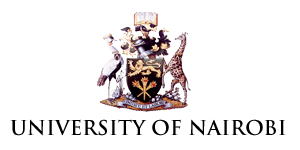Foodland
FoodLAND Project Reveals Nutritional Recommendations for Addressing Malnutrition in Kenya
Over the past four years, the FoodLAND project has worked diligently to address the pressing issue of malnutrition in six African countries in Northern and Eastern regions, namely Morocco, Tunisia, Ethiopia, Kenya, Uganda, and Tanzania. The project's efforts culminate in a comprehensive set of distinctive 360 nutritional recommendations that are relevant, suitable and feasible to implement to combat the diverse forms of malnutrition prevalent in each of these countries, ultimately striving to contribute to the fulfilment of the Sustainable Development Goals, particularly target 2.2, which calls for the significant reduction of all forms of malnutrition.
Decades of shifts in food systems have led to a concerning rise in specific forms of malnutrition, juxtaposing issues like stunting and wasting with escalating rates of obesity and overweight. In African nations, these challenges manifest uniquely across different regions. Currently, Kenya is fighting the tripartite burden of malnutrition that is undernutrition, overnutrition and micronutrient deficiencies. Evidently, the rates of undernutrition are gradually decreasing whereas those of overnutrition are increasing across the lifecycle groups at a national level. However, different counties exhibit different levels of malnutrition.
These trends underscore an urgent need to align food supply chains with nutrition goals, particularly in ensuring accessibility and affordability of nutritious foods, especially for vulnerable demographics like children and mothers. Indeed, the food situation analysis in Kenya has revealed some challenges, such as the percentage of babies that are breastfed (the current national prevalence rate of exclusive breastfeeding is 60%), and the diversity and frequency of children's diet, including milk intake. However, although the rates of stunting, underweight, and overweight among the under-fives have been reduced, they are still the most common challenges in this age bracket. Among adolescents, boys have a higher propensity of being underweight than girls, whereas girls have a higher propensity of being overweight than boys.
The nutritional recommendations put forward by FoodLAND aim to bridge the gap between existing food behaviours and optimal nutrition. The project nutrition working group used three key data sources for the development of the recommendations: (1) An extensive desk review focused on the more recent scientific literature; (2) Surveys conducted in both urban and rural settings, with a specific focus on women with children in their first 1,000 days and (3) Inputs from significant nutrition stakeholders, involved in the validation of the recommendations generated, identification of gaps in those recommendations and generation of recommendations to close the identified gaps.
Specific recommendations for men and women and for different age groups
The nutrition experts of FoodLAND generated a total of 121 nutritional recommendations for Kenya, adapted to the specific needs of people in their different lifecycle stages and have also focused on the different dietary needs adult men and women have.
Within the Kenyan context, the government, through the Ministry of Health and aligned ministries, has set in place strategies to improve the nutrition status of its citizens through campaigns, direct interventions at health facilities, health services and educational activities. The nutrition experts took this into account when formulating the recommendations, and some of them include the Ministry of Health as the main actor in implementing the recommendations. The rest of the recommendations are mainly addressed to households and consumers, as well as to food manufacturers.
The nutritional recommendations aimed at improving the nutritional status of children focused primarily on activities to elevate and protect breastfeeding, promoting exclusive breastfeeding to children below the age of six months and continuing breastfeeding until they are two years old; to implement iron supplementation to all children, and to address re-emergence of rickets (vitamin D deficiency) by sunbathing children in minimal clothing for 13-30 minutes 2-3 times a week, among others. The latter two are extended to the whole childhood, as these deficiencies endure in this age bracket. The recommendations addressing children from six months to more than five years strongly encourage diversifying their diet, ensuring intake of the recommended five food groups per day, including protein and nutrient-dense foods such as meat, fish and eggs. Actions towards reducing malnutrition, both wasting or underweight and overweight or obesity, are also included in the recommendations.
For adolescents, recommendations regarding the adoption of healthy habits and reduction of highly processed snacks and sweetened beverages are the most significant, together with an appropriate intake of water.
For adults, different recommendations are made to women of reproductive age (including pregnant and lactating women) and men. Women are encouraged to improve their diet quality and prevent micronutrient deficiencies, among others. Recommendations for men are more focused on avoiding hazardous foods and substances and improving level of physical activity.
The recommendations for the elderly are similar to those for adults, including the improvement of food diversity in their diet, and taking care of their health status and avoiding unhealthy behaviours. Acquisition of tape-measures at the household level is highly recommended for self-tracking overweight and obesity; the operational recommendation being that continuously women keep their waistline measurements below 35 inches while men keep theirs under 40 inches.
Three bulletins posted on the University of Nairobi website avail a panoramic view of the FoodLAND project generated nutritional recommendations, one each for its three project sites; it suffices as a reservoir of nutritional recommendations for Kitui, Kisumu and Nyeri counties. Some of the novel recommendations include alerts, such as “…avoid/reduce to minimal consumption of carbonated sugary drinks”, “avoid consumption of packaged ultra-processed salty snacks”, “avoid excessive consumption of sugar”, “excessive salt intake is harmful to your health” These alerts go with appeals to food manufacturers to include such warnings on food labels while ensuring customer friendly font size with the elderly in mind.
